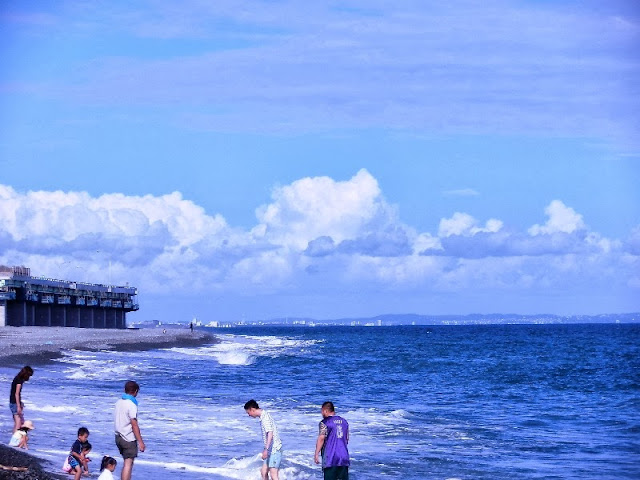How Could Fukushima Daiichi Have been Avoided
In 2007 when Shinzo Abe was prime minister of Japan (he was elected again as prime minister in 2012 after having stepped down in 2007), he officially answered a question issued by a parliament member about a possibility of a nuclear power plant disaster triggered by a total loss of operational electricity in a plant, saying, "It is impossible that such a nuclear accident should occur in Japan where different types of reactors are used than those having experienced such an accident in foreign countries."
PM Abe assured that nuclear power generation plants in Japan would not be damaged and crippled by losing electricity needed for management, control, and operation of a plant due to an earthquake, a tsunami, a typhoon, a flood, a crash of a jet plane, a fire, or any other disaster.
But on March 11, 2011, an M9.0 earthquake and a subsequent 15-meter tsunami knocked down the Fukushima Daiichi Nuclear Power Plant by taking away all electricity being used for management, control, and operation of the Plant.
What is worse, there are other portents, warnings, and incidents which should have been taken seriously by parties concerned as a hint that a nuclear power plant in Japan or specifically Fukushima Daiichi could be hit hard by a natural or a man-made disaster.
In December 2004, an M9.1 earthquake occurred off Sumatra Island of Indonesia, inducing 10-meter high tsunamis. Not only Japanese experts but also ordinary people must have realized that a 10 meter-high tsunami was not a matter of fantasy even in the 21st century. Threy should have assuumed that it could occur around the Japanese Archipelago having 50 nuclear reactors in operation.
In 2008, a study team of Tokyo Electric Power Co., Inc. (TEPCO), the owner of the Fukushima Daiichi Plant, issued a result of their research which indicated a possibility that a big tsunami, higher than 10 meters, could attack the Plant. Later they even presented the finding in some conference held in the US.
From 2004 to 2008, scientists of Tohoku University and other research institutes conducted a scientific investigation on past earthquakes and tsunamis on northern coast lines of Honsyu Island facing the North Pacific. The focused region was about 100 km or more north of Fukushima Daiichi. Eventually they found that the region experienced several times periodically a gigantic tsunami, specifically around 390 BC, 430, 869, and 1500. The time interval was between 450 and 800 years. Especially those tsunamis of 390 BC and 869 flooded deep inland. This interval is almost 1100 years. As it has passed more than 1100 years since the Jyogan Tsunami which occurred in 869, scientists have concluded that a big tsunami could be set off at any moment in the Tohoku Pacific coast lines including Fukushima beaches (250 km from Tokyo). This finding was published in August 2010 by Japanese National Institute of Advanced Industrial Science and Technology.
In July 2007, a big earthquake hit a region of Honsyu Island facing the Sea of Japan. Accordingly the Kashiwazaki-Kariya Nuclear Powrr Plant of TEPCO, the single largest nuclear power plant in the world, caused a fire, though very minor, at potential transformers. But as the Plant had no chemical fire engines, they had to wait for the fire department of Kashiwazaki City to send adequate fire engines. Since this Plant is situated about 250 km from Tokyo, like Fukushima Daiichi, this incident must have taken more seriously by TEPCO and government agencies in charge of nuclear safety. They should have reviewed whole facilities of all the nuclear power plants in Japan in terms of preventive measures against a big earthquake.
Finally, the land on which the Fukushima Daiichi Plant is now situated was originally 35 meters high above the sea level. But when they started to build the Plant in 1967 they took away ground and soils to lower the ground level to 10 meters above the sea level. So, it could not withstand a 15-meter high tsunami on March 11, 2011. If they had just removed ground to set the surface level at 15 meters or more, the Plant would not have had its internal power distribution panels and emergency diesel power generators lost and submerged by the sea water carried by the massive tsunami.
So, the God gave many chances to Japan and the Japanese people so as to make them prepared for a possible large-scale nuclear disaster. In this context we all failed so terribly as symbolized by the horrible explosions of three nuclear reactor buildings of the Fukushima Daiichi Plant in March 2011.
http://ameblo.jp/matsui0816/entry-10844457840.html
Epicenter of Jyogan Earthquake in 869
http://blogs.yahoo.co.jp/dotabata_eye/28540270.html
Epicenter of the Great East Japan Earthquake in 2011
###
Pacific Ocean Coast Lines, Sagami Bay, Honsyu Island, Japan


